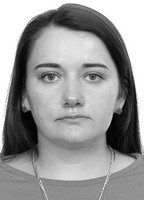Peripheral blood circulation adaptation in finswimmers
Фотографии:
ˑ:
Teoriya i praktika fizicheskoy kultury №10 2017, pp.83-85
Dr.Med., Associate Professor E.Y. Dyakova1
Postgraduate А.А. Mironov1
1National Research Tomsk State University, Tomsk
Objective of the study was to analyse the peripheral blood circulation in the lower limbs of finswimmers. Subject to the study was a Study Group of highly-skilled (Masters of Sport and Candidate Masters of Sport) finswimmers (n=15 aged 18-23 years) having 9+ years of competitive track records. The Reference Group was composed of 15 volunteers (aged 18-21 years) from the academic body conditioning groups of Tomsk State University.
Rheovasography of the lower limbs was performed using Valenta Computerised Test System (made by Neo Company Ltd., Russia) with the subjects’ thighs and shins being tested using a bipolar scheme. The study data were statistically processed using the Mann-Witney U-criterion by STATISTICA 12.0 software toolkit.
It was found that many rheovasographic lower-limb test rates of the finswimmers were significantly different from those of the Reference Group both at rest and after the physical loads. On the whole the blood circulation system of the athletes was found better adaptable to physical load, with the adaptation processes including the following: relaxation of tonus of the arterial vessels and high-intensity arterial blood flow securing a higher regional minute pulse volume and better venous outflow. The RG subjects trained in the body conditioning groups also showed some adaptation to the physical loads albeit less expressed versus that of the finswimmers. The RG was tested with somewhat congested venous outflow with the blood circulation being generally lower than in the finswimmers’ group.
Keywords: adaptation, peripheral blood circulation, rheovasography, finswimming, athletes.
References
- Kudrya O.N., Kiryanova M.A., Kapilevich L.V. Osobennosti perifericheskoy gemodinamiki sportsmenov pri adaptatsii k nagruzkam razlichnoy napravlennosti [Features of peripheral hemodynamics in athletes when adapting to different types of load]. Byulleten sibirskoy meditsiny, 2012, no. 3, pp. 48 – 52.
- Shestakov I.M., Terkulov A.F. Tsentralnaya gemodinamika sportsmenov, spetsializiruyuschikhsya v plavanii v lastakh [Central hemodynamics of finswimmers]. Materialy vseros. nauch.-prakt. konf. spetsialistov podvodnogo sporta "Podvodny sport. Sovremennoe sostoyanie i perspektivy razvitiya [Proc. res.-practical conf. diving sport experts "Diving. Current state and development prospects]. SibSAU publ., Krasnoyarsk, 2005, pp. 147-152.
- Yakovleva V.P. Kharakteristika gemodinamiki i nekotorykh pokazateley metabolizma u plovtsov-podvodnikov vysokoy kvalifikatsii v dinamike godichnogo trenirovochnogo tsikla. Avtoref. dis. kand. biol. nauk [Characteristics of hemodynamics and some metabolic indices in highly skilled divers within annual training cycle. PhD diss. abstract]. Chelyabinsk, 2009, 23 p.
- Illarionova, A.V., Kapilevich, L.V. Osobennosti vnutrimyshechnoy i mezhmyshechnoy koordinatsii pri dozirovanii usiliy v usloviyakh neustoychivogo ravnovesiya [Distinctive features of intramuscular and intermuscular coordination at power graduation in the context of balance training]. Teoriya i praktika fizicheskoy kultury, 2014, 12, pp.44-46.



